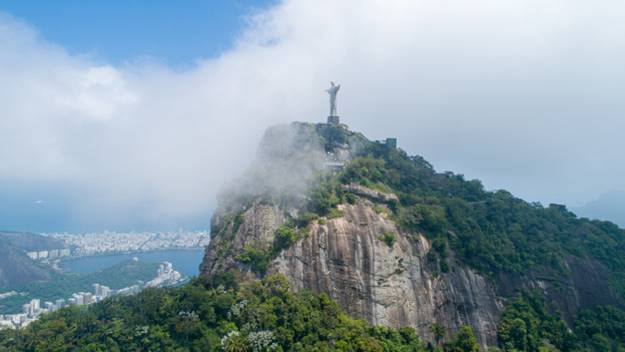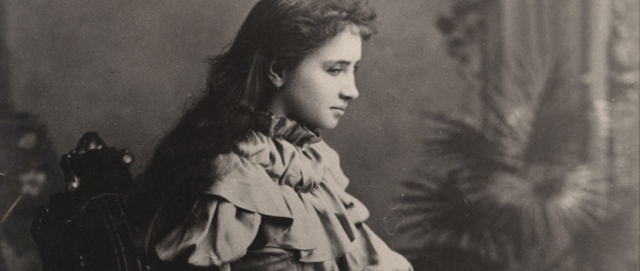Christ the Redeemer

Christ the Redeemer is an Art Deco statue of Jesus Christ in Rio de Janeiro, Brazil, created by French sculptor Paul Landowski and built by Brazilian engineer Heitor da Silva Costa, in collaboration with French engineer Albert Caquot. Romanian sculptor Gheorghe Leonida fashioned the face.
Constructed between 1922 and 1931, the statue is 30 metres (98 ft) high, excluding its 8-metre (26 ft) pedestal. The arms stretch 28 metres (92 ft) wide. The statue weighs 635 metric tons(1,145 tons if the base is counted) and is located at the peak of the 700-metre (2,300 ft) Corcovado mountain in the Tijuca Forest National Park overlooking the city of Rio de Janeiro.
A symbol of Christianity across the world, the statue has also become a cultural icon of both Rio de Janeiro and Brazil. It was built to celebrate the 100-year anniversary of Brazil’s independence from Portugal. It was officially inaugurated on 12 October 1931.
Christ the Redeemer was built using reinforced concrete and has an outer shell of 6 million triangular soapstone tiles. It’s believed that the workers who made these tiles occasionally wrote notes on the back, meaning this iconic landmark is full of hidden messages.
It was not actually built in Brazil. It was first made in France by French sculptor Paul Landowski who created the statue in clay pieces. These were then shipped to Brazil to be remade with reinforced concrete.
The first project to build a large religious monument was proposed in the 1850s by a Catholic priest Pedro Maria. The request for funding was not approved because Princess Isabel did not support this idea. The request was officially refused in 1889 when Brazil mandated the separation of church and state. But a petition launched by a group in the 1920s, called the Catholic Circle of Rio, was a success. Construction therefore began in 1922 and took nine years to complete. The money to build Christ the Redeemer came from the Catholic community of Brazil.
Construction of the statue took 9 years. Beginning in 1922, it was finally finished in 1931 at a cost of $250,000 US. The original design of the statue was different to what we see today. It was intended for Christ to be holding a globe in one hand and a cross in the other, rather than two open arms which intends to show that Christ loves everyone and welcomes all who come to Him.
Today, Brazil is a much more religiously diverse nation, and many view the statue’s gesture as one of welcoming and peace. In 1969, Brazilian artist Gilberto Gil wrote a song inspired by the monument called “That Hug” (“Aquele Abraço”).
Housing prices in Rio de Janeiro have increased simply if the property has a view of Christ the Redeemer. Apartments with even a slight view of the statue are higher than those with the same location and size but no view.
The statue is the largest Art Deco-style sculpture in the world and is the 5th biggest statue of Jesus in the world.
The fact that the statue stands on top of a large mountain makes it prone to lightning strikes, and it gets hit several times a year. In 2008, an enormous thunderstorm damaged the head, eyebrows, and fingers. Later, during FIFA world cup in 2014, lightning hit and damaged the back of the head and tip of a finger, which had to be repaired quickly before the games began.
The right arm points to south Rio de Janeiro and the left arm points to north Rio de Janeiro.
There is a chapel at the base of the statue, so it is possible for couples to get married there. The chapel is named after Brazil’s patron saint, Our Lady of the Apparition. It was built to celebrate the monument’s 75th anniversary in 2006.
In 2015, two explorers, Vadim Makhorov and Vitaly Raskalov, climbed the statue and took video footage and photos. Over the years, the statue will gradually get darker. The light coloured stone was taken from a quarry near the city of Ouro Preto in Minas Gerais but due to its short supply the restoration work uses different types of stone to fix any damage. The result is that a stone in a darker hue is gradually replacing the light colour of the statue. In 2010, graffiti artists defaced the statue by writing over the surface. The then-mayor declared this act as a ‘crime against the nation’, resulting in the vandals turning themselves into the authorities.
After taking the train or van or hiking up the mountain, visitors then had to climb a flight of 220 steps to reach the Christ the Redeemer, which was the only access available, even for senior citizens or disabled visitors. However, in 2003, much to the relief of all future visitors, an escalator was installed so that visitors can make the journey up with much more ease.
Each year, Christ the Redeemer is visited by nearly 2 million people. The record number of visitors to the statue in a single day was a huge 14,000 during Easter of 2011.




